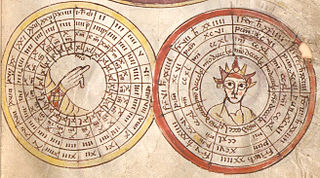Related Research Articles
A calendar date is a reference to a particular day represented within a calendar system. The calendar date allows the specific day to be identified. The number of days between two dates may be calculated. For example, "25 September 2022" is ten days after "15 September 2022". The date of a particular event depends on the observed time zone. For example, the air attack on Pearl Harbor that began at 7:48 a.m. Hawaiian time on 7 December 1941 took place at 3:18 a.m. Japan Standard Time, 8 December in Japan.

ISO 8601 is an international standard covering the worldwide exchange and communication of date and time-related data. It is maintained by the Geneva-based International Organization for Standardization (ISO) and was first published in 1988, with updates in 1991, 2000, 2004, and 2019. The standard provides a well-defined, unambiguous method of representing calendar dates and times in worldwide communications, especially to avoid misinterpreting numeric dates and times when such data is transferred between countries with different conventions for writing numeric dates and times.

A week is a time unit equal to seven days. It is the standard time period used for cycles of rest days in most parts of the world, mostly alongside—although not strictly part of—the Gregorian calendar.
The modern 24-hour clock, popularly referred to in the United States as militarytime, is the convention of timekeeping in which the day runs from midnight to midnight and is divided into 24 hours. This is indicated by the hours passed since midnight, from 0(:00) to 23(:59). This system, as opposed to the 12-hour clock, is the most commonly used time notation in the world today, and is used by the international standard ISO 8601.
The percent sign% is the symbol used to indicate a percentage, a number or ratio as a fraction of 100. Related signs include the permille sign ‰ and the permyriad sign ‱, which indicate that a number is divided by one thousand or ten thousand, respectively. Higher proportions use parts-per notation.
Different conventions exist around the world for date and time representation, both written and spoken.
Date and time notation in Canada combines conventions from the United Kingdom, conventions from the United States, and conventions from France, often creating confusion. The Government of Canada specifies the ISO 8601 format for all-numeric dates. It recommends writing the time using the 24-hour clock (05:00) for maximum clarity in both Canadian English and Canadian French, but also allows the 12-hour clock (5:00 a.m.) in English.
Date and time notation in the United States differs from that used in nearly all other countries. It is inherited from one historical branch of conventions from the United Kingdom. American styles of notation have also influenced customs of date notation in Canada, creating confusion in international commerce.
In Finland, the usual way of writing dates in normal text is with the months spelled out. The format varies according to the language used. In Finnish, a full stop is placed after the day to indicate an ordinal: “31. toukokuuta 2002”; furthermore, the month is in the partitive case, always marked by -ta. The month can also be written first, now in genitive case : “toukokuun 31. pnä 2002”. In Swedish, the full stop is not used and the month is in nominative : “den 31 maj 2002”.
Date and time notation in Sweden mostly follows the ISO 8601 standard: dates are generally written in the form YYYY-MM-DD. Although this format may be abbreviated in a number of ways, almost all Swedish date notations state the month between the year and the day. Months are not capitalised when written. The week number may also be used in writing and in speech. Times are generally written using 24-hour clock notation, with full stops as separators, although 12-hour clock notation is more frequently used in speech.
Date and time notation in the United Kingdom records the date using the day–month–year format. The ISO 8601 format (2022-09-27) is increasingly used for all-numeric dates. The time can be written using either the 24-hour clock (17:04) or 12-hour clock.
The European Committee for Standardization (CEN) and (CENELEC) adopted ISO 8601 with EN 28601, now EN ISO 8601. As a European Norm, CEN and CENELEC member states are obligated to adopt the standard as national standard without alterations as well.
ISO 8601 has been adopted as BIS IS 7900:2001.
The most formal manner of expressing the full date and/or time in South Korea is to suffix each of the year, month, day, ante/post-meridiem indicator, hour, minute and second with the corresponding unit and separating each with a space:
Date and time notation in Australia most commonly records the date using the day-month-year format, while the ISO 8601 format (2022-09-26) is increasingly used for all-numeric dates. The time can be written using either the 12-hour clock or the 24-hour clock (15:29).
The legal and cultural expectations for date and time representation vary between countries, and it is important to be aware of the forms of all-numeric calendar dates used in a particular country to know what date is intended.
Date and time notation in Italy records the date using the day–month–year format. The time is written using the 24-hour clock (15:39); in spoken language and informal contexts the 12-hour clock is more commonly adopted, but without using "a.m." or "p.m." suffixes (3:39).
This article is about date and time notation in Mongolia.